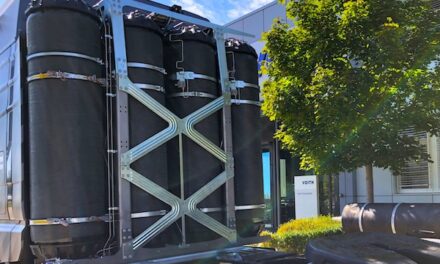Transportation industry professionals acknowledge Singapore’s value in the shipping world. The Singapore logistics hub is booming for numerous reasons, and experts claim its reputation will hold for years. The secret to Singapore’s success is dedication and prioritisation, but how do governments, shipping companies and logistics collaborate to make the world’s most-renowned shipping hub?
1. Singapore Does Not Stop Raising the Bar
Singapore is the top-ranking nation for the ninth year in a row on the Xinhua-Baltic International Shipping Centre Development Index, followed by London and Dubai, among others. It considers the number of available cranes, infrastructure, financing and insurance law alongside numerous other categories. The 94.88 out of 100 score did not deter Singapore from creating more ambitious port designs to raise expectations even more.
Singapore has several port-related development plans in the works. One is the Tuas Port, set to finish around 2040. It will be the world’s largest container terminal for handling all 20-foot equivalent units. The project touts its eco-friendliness and incorporation of smart technology to make the world’s next generation of shipping hubs. Reassigning that responsibility to a new port will be a game-changer for the efficiency of the rest of Singapore’s ports.
2. Singapore’s Government Makes Maritime a Priority
After repeated global recognition for the number of vessels and containers in Singapore’s ports, it makes sense for regulatory bodies to put them at the forefront of national initiatives. The maritime sector accounts for 7% of the gross domestic product in the nation and 183,000 jobs by 2025 because of growth efforts.
Economists expect the number to rise as the Tuas mega-port reaches completion. Other nations placing international companies in Singapore will experience growth, too. For example, trading partner Malaysia has seen a 4% growth in GDP, which could rise even more with Singapore-based shipping offices.
The nation succeeds in making a name for itself in the industry because it devotes time, funding and workforces to reinforcing it for the long-term. A disruption in global rankings would rattle the sector, so the Singapore logistics hub has additional pressure to keep its focus sharp.
3. Ports Leverage Artificial Intelligence and New Tech
Ports want to control traffic for efficiency and prevent as many collisions as possible. Monitors, sensors and artificial intelligence with machine learning and deep learning capabilities gather information from the ports for simulations, insights and process developments. It is the best opportunity the world’s shipping sector has when gathering analytics because of the sheer number of ships and containers passing through Singapore daily.
Systems will send alerts to nearby ships with compatible software if potential accidents are on the horizon or if they will hit heavy traffic and delays. Singapore provides incoming ships with hotspot data to organise their work while keeping its ports congestion-free and streamlined. Eventually, these advancements will breach similar technologies like drones and autonomous cranes to perform autonomous assistance to keep ships moving expediently.
4. Continued Improvement Justifies Constant R&D
Singapore advertises its endless passion for research. They support startups, encourage tech investors and enablers, and fund research institutes. Singapore is a logistics hub full of local talent that also entices third-party logistics providers to set up shop and develop from within the nation’s borders. Industry leaders want to use the infrastructure they have to boost their shipping companies.
The way they created more time to research is through process discovery. They are the top nation in the world when it comes to expedient permitting, where they process 90% of e-applications in minutes. Shaving off minutes from unloading cargo to administrative necessities equals hours spent creating a more robust R&D system.
5. Cybersecurity Is More Resilient
Critical infrastructure is taking a hit as hackers discover the profitability behind shutting down these systems. The maritime business is excited by autonomous technologies while holding some reservations.
For example, compromised drones controlled by threat actors could transport harmful data to numerous ships in a supposedly modern port, weaving compound cyberattacks. Singapore did not waste time building defences with modern technologies to ensure their ports and clients were safe.
The Next Generation Vessel Traffic Management System that will be crucial for Tuas Port’s expansion considered security during development. They will collaborate with the up-and-coming Maritime Cyber Assurance and Operations Centre to set new security standards for global maritime operations. Building defences now saves the Maritime and Port Authority of Singapore’s reputation from being irreparably damaged in a world of ever-increasing cyber threats.
The Singapore Logistic Hub Is Top in the World
Singapore’s reputation in the shipping sector is unparallelled and unlikely to be topped by another port in the world for the foreseeable future. Every year, its ports become more advanced and well-rounded, catering to the industry’s most recent trends and data while buying into novel technologies for faster, competitive growth. Despite ports looking to Singapore for inspiration on evolving, it appears its ports will always be several steps ahead.
Emily Newton







